Software Used on this Project
Project Overview
In the small town of Bad Hersfeld in Germany, schlaich bergermann partner (sbp) designed a pedestrian and bicycle bridge crossing the river Fulda. The footbridge was inaugurated at the end of the year 2021 and connects the foot and bicycle paths on the east and west sides between the neighbourhoods of Johannesburg and Bad Hersfeld’s city centre. The bridge is approximately 80 metres long and 3 metres wide. Its S-shaped design seamlessly integrates the ramp structures into the area’s natural landscape and provides a smooth connection for cyclists across the river. The team used Oasys GSA for the dynamic analysis of the pedestrian bridge.
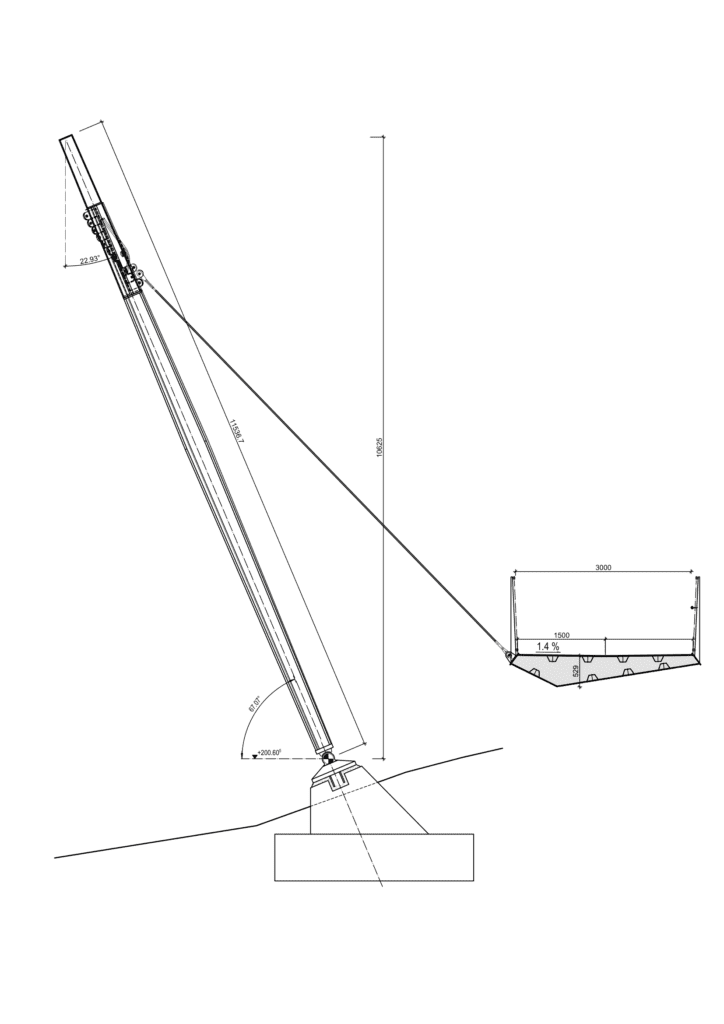
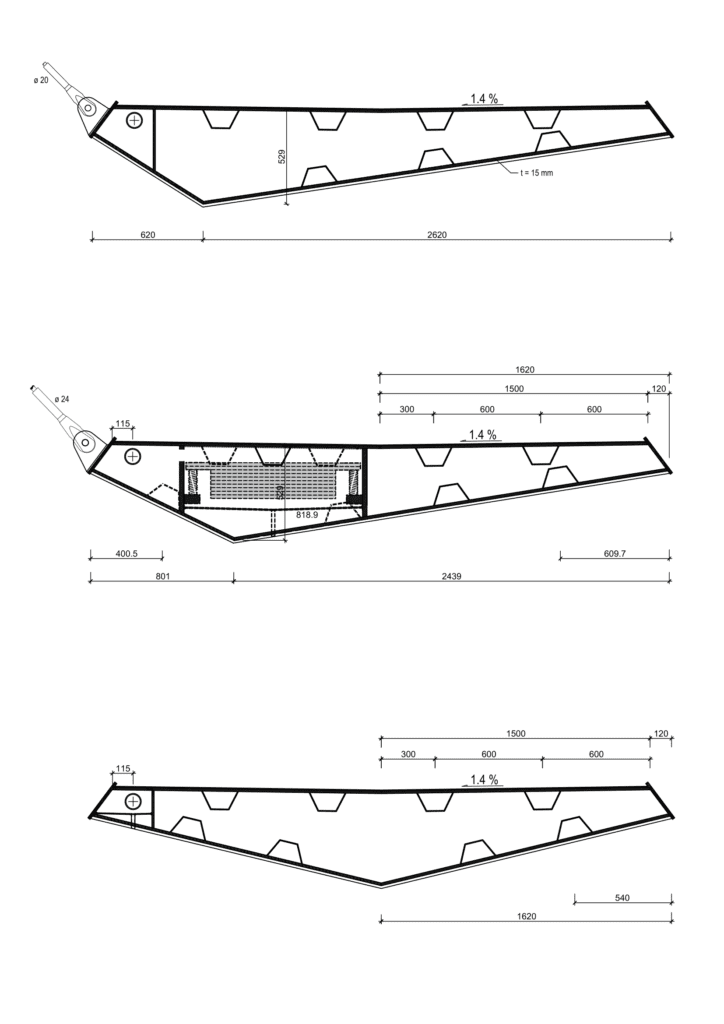
The point-symmetrical design of the bridge is reflected throughout its geometry. The two masts are positioned at the respective centres of gravity of each of the bridge halves. This allowed for a cable arrangement with backstay cables to be integrated into the design which stabilised the masts.
The bridge deck is designed as an asymmetric hollow box with a structural depth of 0.5 metres. The lower ridge position varies along the deck to respond to the curvature and the eccentric cable connections, which are attached to diaphragm plates stiffening the box every 2.9 metres.
On every bridge half, 14 cables span to one of the two 11-metre-high masts. The outer cables are connected to the abutments and balance out the axial forces of the bridge deck. The masts are designed as steel hollow boxes with tapered rectangular cross-sections, measuring less than 0.4 metres at their thickest point. The superstructure is firmly anchored in the abutments at both ends, with earthworks ramps connecting to the abutments.
Modelling
The superstructure is modelled using beam elements, representing a polygonal shape composed of 28 straight segments, each assigned a specific cross-sectional group. The folding of the towers is approximated using five cross-sections each. The cables are modelled as tie elements with equivalent diameters.
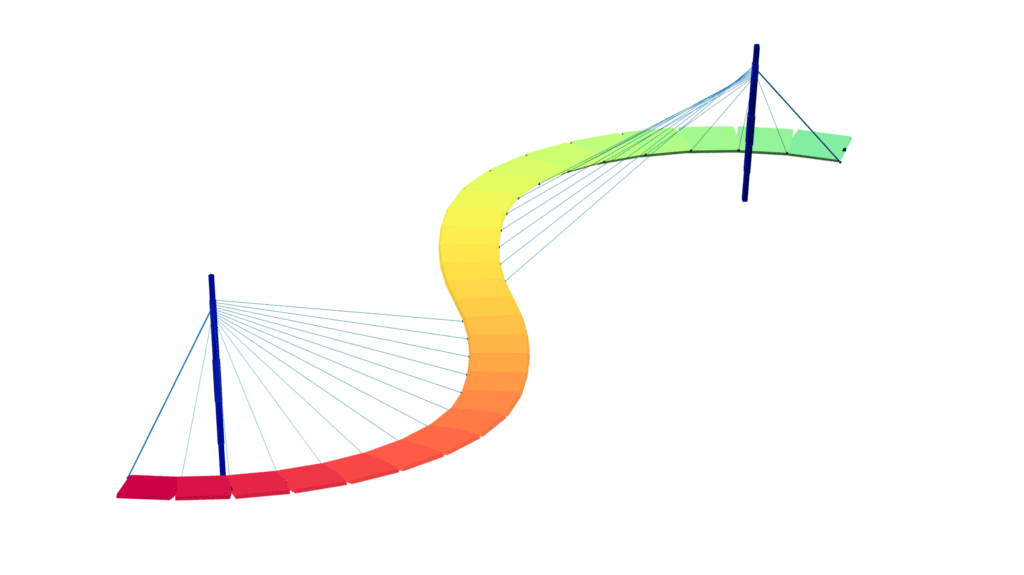
© sbp
How Oasys proved invaluable
Dynamic evaluation of the Footbridge
Oasys GSA was used for the dynamic analysis of the pedestrian bridge. Due to its monolithic structure and materials, consisting of welded steel segments and suspension cables, the bridge has low inherent damping and can be easily stimulated to vibrate by pedestrian traffic. The first three vertical natural frequencies, approximately 1.3, 1.5, and 2.2 Hz, are critical and fall within the potential excitation range. Due to the curved plan layout, the first horizontal natural frequency is located outside the critical range. The natural frequencies were determined using GSA’s modal analysis.
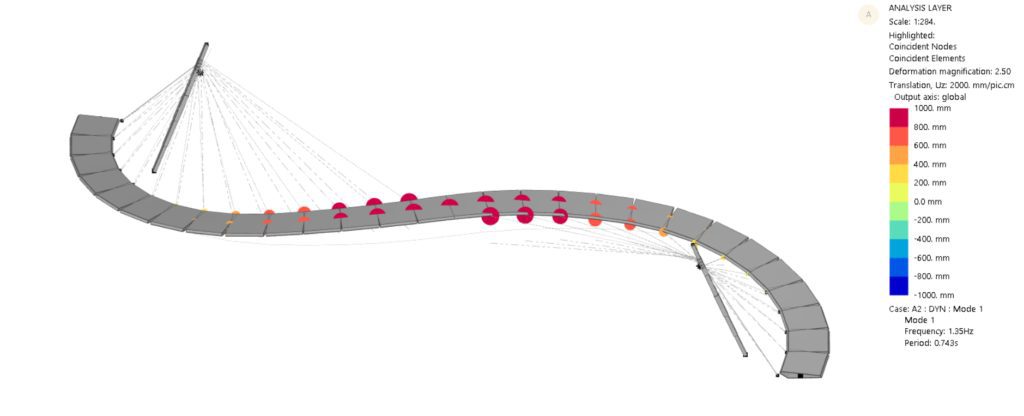
Mode 1: Vertical, 1.35 Hz (1.23 Hz with pedestrian traffic)
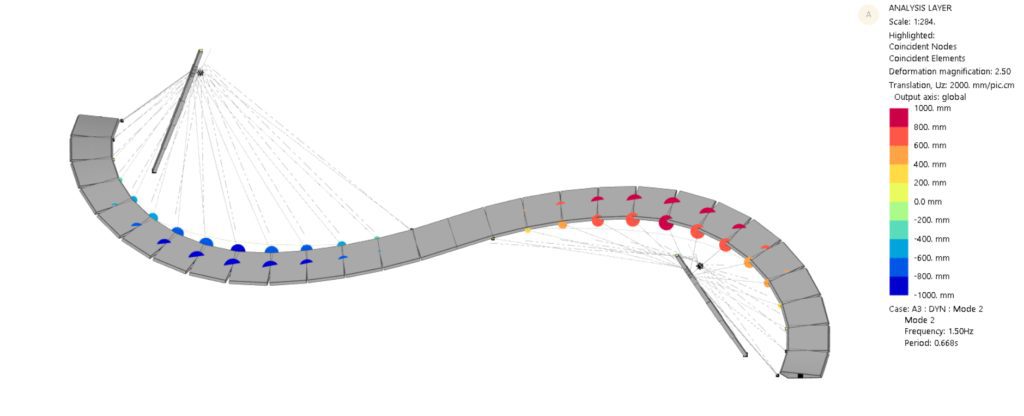
Mode 2: Vertical, 1.50 Hz (1.37 Hz with pedestrian traffic)
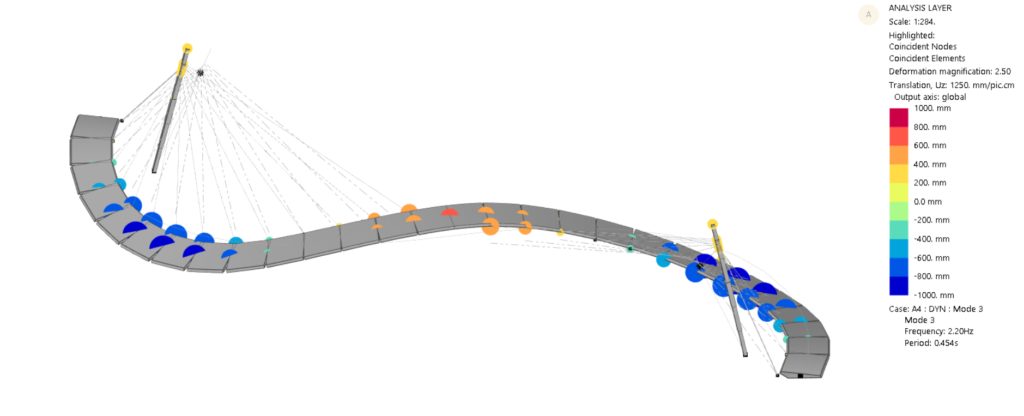
Mode 3: Vertical, 2.20 Hz (2.02 Hz with pedestrian traffic)
The loading model, based on the HIVOSS (Human induced vibration of steel structures) guidelines, incorporates a dynamic distributed load representing the equivalent pedestrian flow, with appropriate signs applied to all areas of the bridge. The loading and consequently the number of pedestrians to be considered are based on the selected traffic class, and the resulting acceleration was compared to the chosen comfort level.
The following design scenarios were considered for the bridge:
- Bridge Inauguration: 1 person/m², lowest comfort level 2.5 m/s²
- Normal Traffic: 0.2 persons/m², medium comfort level 1.0 m/s²
- Vandalism: 5 persons locally, lowest comfort level 2.5 m/s²
For the vandalism scenario, it is assumed that the group of 5 people concentrates on an area of 10 m². To determine the maximum accelerations, a harmonic analysis was conducted using GSA. A damping ratio of 0.5% was assumed, and for the vandalism case with large amplitudes, 2% was used.
The resulting accelerations in the normal usage scenario were within acceptable limits, just below the set threshold. Maximum accelerations for the second natural frequency of 1.50 Hz were 0.98 m/s², which is less than the specified 1.0 m/s².
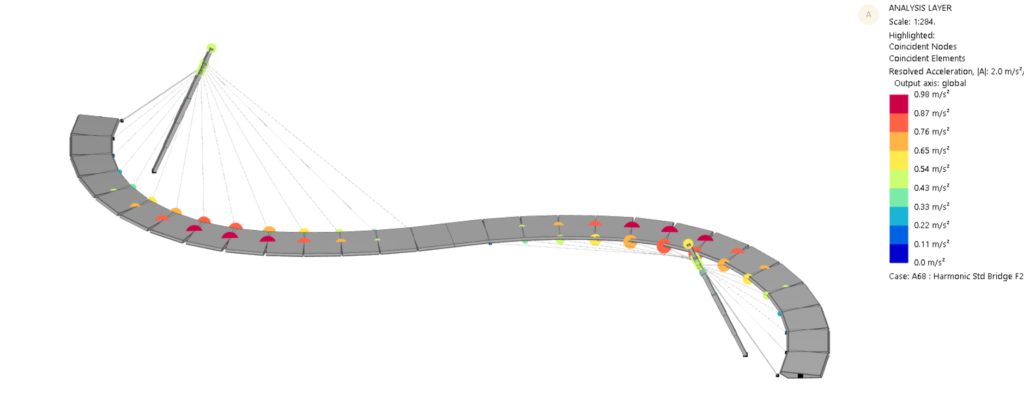
Maximum accelerations for f = 1.50 Hz: 0.98 m/s² < 1.0 m/s²
In the Bridge Inauguration scenario, the resulting accelerations were 1.4 m/s² for the first natural frequency and exceeded the limit of 2.5 m/s² for the second natural frequency. Based on experience, the damping of a fully loaded pedestrian bridge increases due to the pedestrians, but at least a 2% damping ratio would be required to achieve the set acceleration limit.
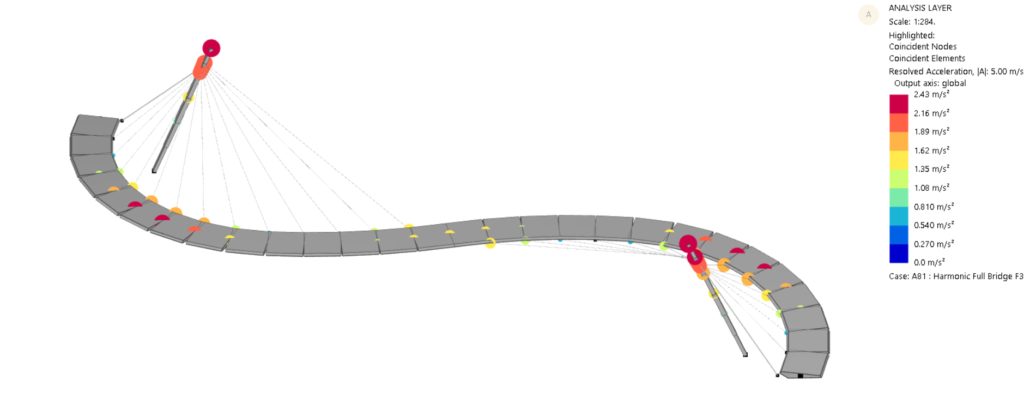
Maximum accelerations for f = 2.02 Hz: 2.27 m/s² (Deck) < 2.5 m/s²
The results of the Vandalism scenario were not critical due to increased damping, with accelerations reaching 1.2 m/s², well below the established limit.
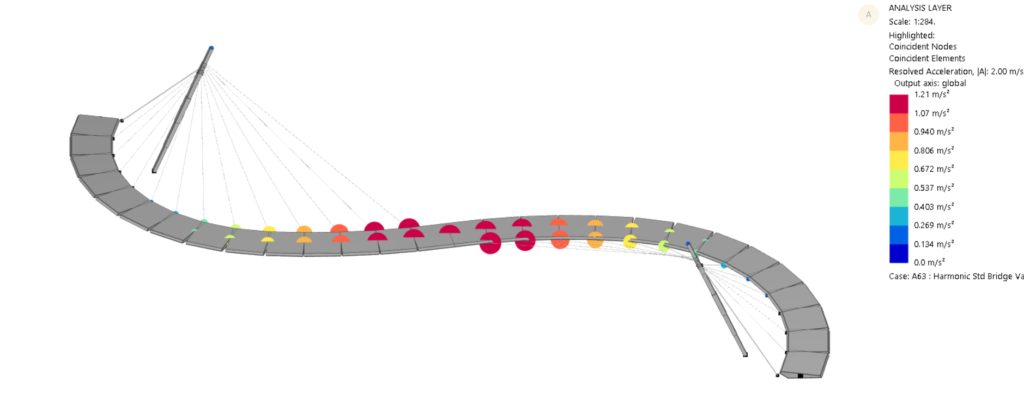
Maximum accelerations for the natural frequency 1.35 Hz: 1.21 m/s² < 2.5 m/s²
Based on these results, it was agreed with the client to provide two accessible and lockable reservations in the bridge deck, allowing for tuned mass dampers to be installed after a joint evaluation of the constructed bridge. The perceived vibrations were lower than expected. Nevertheless, the client preferred the installation of dampers.
Measurements conducted on the constructed system showed a good match between the natural frequencies and the calculated values. The system damping for the critical mode at 1.5 Hz increased from approximately 1% to over 7%, while other modes were raised to damping values of over 4%, significantly reducing noticeable vibrations and ensuring the maximum comfort level for all scenarios was met.
We would like to thank sbp Managing Director, Andreas Schnubel and the team at sbp for sharing this work with us.
Click here to learn more about the project.
Learn more about Oasys GSA’s bridge analysis and design capabilities here.
